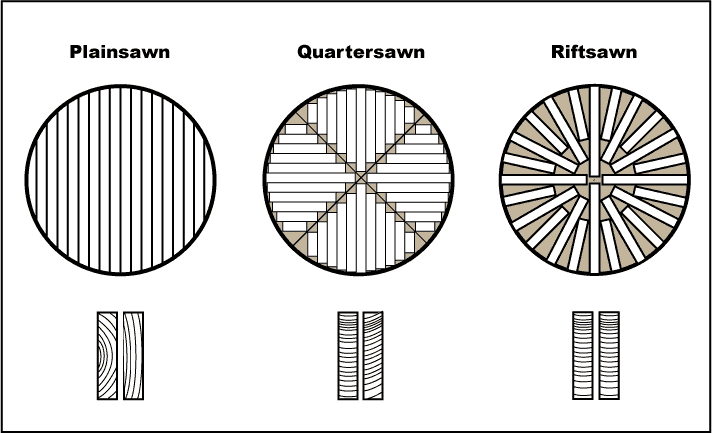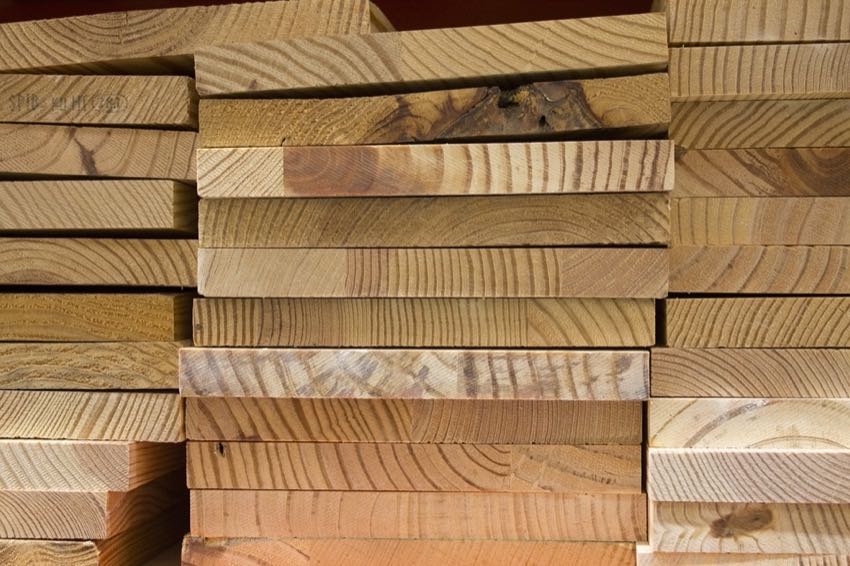Plain-sawn or rip-sawn wood uses a particular method of milling trees that yields highly usable, strong boards. It delivers the least amount of waste of any milling method. Unlike quarter sawn wood, particularly popular for oak and maple, plain-sawn wood presents less exposed grain on the face of the board. Most lumber uses this simpler rip-sawing (or plain-sawn) process. As the most efficient sawmilling method, it utilizes almost every square inch of a tree to make usable boards.
Also, since this type of cut generates the most amount of wood, it also yields lower-priced boards. Sawmills use this as the preferred method for nearly all general construction and woodworking lumber.

Plain-sawn (Rip-sawn) Lumber Benefits
In a word (or two): looks and efficiency/price. Because the grain is not as important in plain-sawn lumber, using the rip-sawn method is a sure way to get the most boards out of a tree. It generates inexpensive lumber stock perfect for construction and basic furniture. Since the end grain of the wood ends up horizontal to the board’s face, one thing to think about is how a board might twist after installation and exposure to the elements. “Cupping” happens when a board bends along the line of the grain. You will see this a lot on decking boards. It is this phenomenon that deems it best to lay boards so that they cup “into” the joists and not up, trapping additional moisture.

If you’ve ever seen oak or maple cut normally, you’ll immediately see that quartersawn lends itself to a nicer presentation – unless you like the horizontal tiger striping found in a more traditional plain-sawn cut.
How Do You Get Plain-sawn Wood from a Tree?
In a word: easily. The plain-sawn method feeds the tree through a saw, “planing” off each board in sheets for lumber material. It is not unusual to get some combination of 4×4, 2×6, 2×4, and 2×2 material from a single tree.
Expansion and Contraction
It’s important to understand how plain-sawn or rip-sawn wood will expand and contract with moisture and humidity. All wood will have some movement, but the most traditional style of millwork leaves you the most exposed to this phenomenon. Unlike the more hardy quartersawn and rift-sawn lumber, rip-sawn milled wood can more easily twist or “cup”. That means it’s far easier to find these boards straying, rather than maintaining a perfect shape over time. This is especially true after exposure to the elements.


